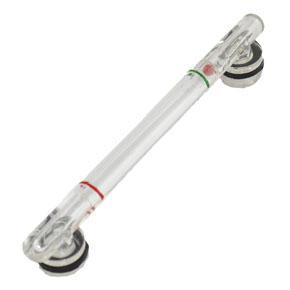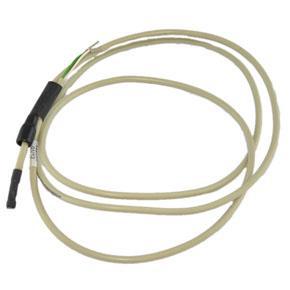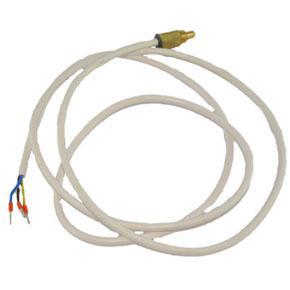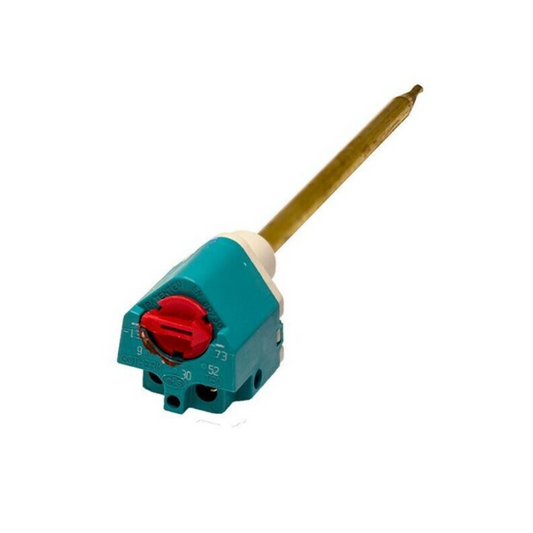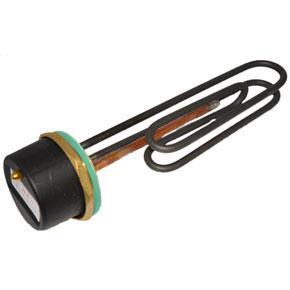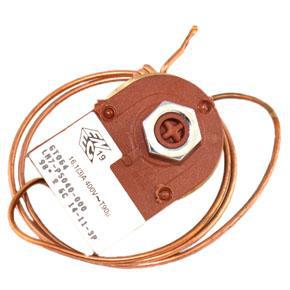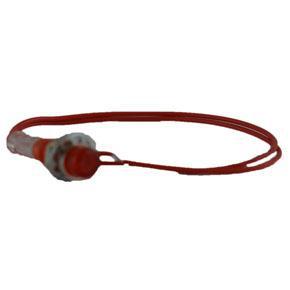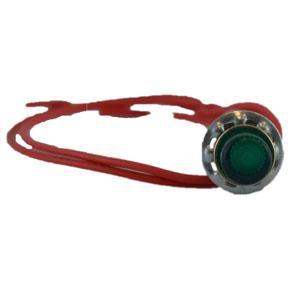PulsaCoil 2000 By Gledhill
PulsaCoil 2000 Introduction
When it comes to the safe and sound heating of water, the PulsaCoil 2000 is one of the most respected on the market. Known for its effective water heating system and consistency in operation, these tend to be first-picks for cost-conscious contractors across England. However, with so many versions of the Pulsa Coil water heaters around, you might be unsure of what version you have.The pioneering system changes all the time, so you should be sure to keep an eye on the latest developments – the hardware is always improving! Check out Pulsacoil 2000 Replacement page for the latest system. The PulsaCoil 2000 is slightly more modern than some of the other iterations, but still lags behind the Stainless and ECO Stainless options. However, those who do have the PulsaCoil 2000 have a solid system that can be repaired and maintained as long as the internal copper cylinder is not leaking. As explained earlier, the PulsaCoil 2000 does a great job of differentiating itself from the original. Working as a full immersion heater, this heats up the water inside a thermal store. Using a heat sensor known as a thermistor (DHW sensor), this attaches itself to the hot water outlet exchanger via the outlet piping. The heat exchanger is what makes the process from cold to hot water possible in the Gledhill PulsaCoil 2000. The pump itself regularly circulates stored hot water through the plate heat exchanger system. In turn, this heats up the water to the expected temperature in a short period of time. Should there ever be a fall recorded in the water temperature by the thermistor (DHW sensor) then it will spring into action and “plug the gap” in temperature to so speak inside your Pulsacoil 2000. Whilst the PulsaCoil 2000 can still be maintained, it's important to also note that the PulsaCoil 2000 is now rendered obsolete by the latest innovations, including the PulsaCoil Eco Stainless. You cannot legitimately buy and fit any of the older systems, as they fall behind the quality standards expected in comparison to the modern versions. However, by the same token, you can have them repaired, managed, serviced and maintained. If you wish to buy a PulsaCoil, you have to buy the most modern version.Proportional PulsaCoil 2000 Success
However, one of the major features of the PulsaCoil 2000 is the fact that it uses the exceptional proportional system to manage performance safely. This is very useful, avoiding the problem that a large temperature fall can bring to the table. When the sensor notices any kind of dip, it will kick into action. Now, a flow temperature of around 52 degrees °C can be achieved with recurring consistency. When the hot taps come on thanks to this proportional feature, you now know that they have a fair and set temperature that is never too hot nor too cold. If this did occur we would first recommend you check the water level inside your Pulsacoil 2000. Should the temperature rise beyond a certain point, then the circuit board will shut itself off to allow a consistent temperature to be achieved. This is very useful in making sure that your PulsaCoil 2000 maintains its performance, unlike other thermal systems. In reality it slows down the pump inside the Pulsacoil 2000 to keep its consistency in providing hot water.Benefits of the PulsaCoil 2000
Whilst no longer available to pick up, the PulsaCoil 2000 was a major hit in its time.To understand why people and contractors made the choice to pick this up, it helps to know where you stand with its major features. Some of the benefits that you can expect from using this system would include; Logically Designed. By making use of the correct balances in terms of water strength and depth, this goes a long way to making sure you get the right volume, velocity and temperature of water every time you use your PulsaCoil.PulsaCoil 2000 in your apartment? Watch the video below to find out why you most likely have a Gledhill Pulsacoil 2000
- Pulsacoil 2000 is Legionnaires Free. This common illness is quite a major problem to deal with and can have negative consequences on your health as a whole. With the help of this temperature control system, you more or less remove all of the needed ingredients for an infection to be allowed to grow and then contaminate.
- Pulsacoil 2000 is easy to check. Although some problems are more common and can be frustrating to deal with, they can usually be diagnosed with relative ease. In comparison to the complex puzzles needed to solve the problems with other thermal heating systems, the Pulsa Coil 200 system does a job of making your life easier if it was installed and/or repaired by a team of PulsaCoil specialists. Viable Spares. Some heating systems can feel impossible to get spare parts and extras for repair and maintenance from. Add in the ease of finding parts for your system, and it becomes a dream to look after. Repairs are usually easy enough to afford, and the parts needed for repairs tend to be widely available and affordable. However, DIY jobs are not recommended – it’s a little too challenging.
- Pulsacoil 2000 is an open vented thermal store. Due to the system being an open vent system it does not regular yearly checks. It also does not require a temperature or pressure relief valve.
- Modern design. The look of the Gledhill PulsaCoil 2000 goes well in modern apartments compared to the old copper and foam conventional water heaters.
- Pulsacoil 2000 water pressure is great. The system provides hot water at the same pressure as cold water.
Below is a video which goes over 5 costly mistakes when having your Pulsacoil 2000 repaired
PulsaCoil 2000 Thermistor Damage

The thermistor is needed for the whole operation to work, so it makes sense that it’s the most common fault for owners of PulsaCoil 2000 units. This tends to occur as the heat sensors begin to lose reliability as time passes. Unfortunately, nothing can be done to stop this from occurring. Unstable water temperature readings are your main sign to look out for – you’ll notice limitations in both temperature and speed. When this happens, you can look out for the little red LED device. When this flashes seven times in a second (easy to notice) you are being informed that your thermistor is finished and is due a replacement. This should be carried out by a professional PulsaCoil 2000 installation team. Consistency is vital for this tool to work, so thermistor damage should be a primary concern that you have corrected should you notice any weird readings. Also some times the PCB board gives off incorrectly readings via the built on red LED. A major thing to watch out for is when a contractor has fixed your problem by bypassing the PCB which uses the sensors to give the correct amounts of hot water and has directly fed your pump with a power supply. This is very dangerous.
Tripping PulsaCoil 2000 Overheat Cylinder Stat

A problem that you may be likely to face is constant tripping of the overheat protection. This tends to wear out with time and usage and means that eventually you’ll be tripping before you need to be with regards to the temperature. If you see the Fault light come on, and the unit does not heat up until you press the Manual Overheat Reset button on the interior, then your thermostat is not working right and should be reviewed and replaced. Unfortunately, repairs are more or less impossible by this point. A PulsaCoil installation team can give you an upgraded replacement for this, courtesy of Gledhill. This replaces this oversight which was prevalent on many older models, and can save you a lot of time and frustration. If you think that you need to make this change then book a plan with a PulsaCoil specialist ASAP. Also sometimes it may not be the overheat cylinder stat inside your Pulsacoil 2000 but instead it is occurring due to lack of water in the cylinder or because the thermostat rod has become faulty and is not cutting off correctly.
Circuit Damage In PulsaCoil 2000 
The next issue that you are likely to need to combat, though, is circuitry damage inside the PulsaCoil 2000. It’s easily spotted, thankfully; just look out for there being no flashes from the circuit boards LED system. Look out for this as it means more or less the whole system is damaged – circuitry damage means immensely limited potential and efficiency, so have it looked into and corrected ASAP. However, it’s not a catch-all solution; sometimes the problem is beyond a simple correction. If maybe occurring due to a pump issue or other factors inside your PulsaCoil 2000.
Contaminated PulsaCoil 2000 Exchange 
One of the rarest yet most confusing problems you can face is the contamination of the plate heat exchanger. Over time this is likely to be susceptible to water scaling in some particular parts of the exchanger. This means that maximum water temperatures start to come down and become lower than you want or not. Eventually, scaling can become so bad that your flow rate starts to reduce as well. This means you are getting a fraction of the efficacy that you need, or indeed paid for, from your hardware. At this point, it’s recommended to get a specialist in to fit a new plate entirely inside your Pulsacoil 2000. Don’t let this one linger for too long as it’s a very expensive problem to be dealing with.
Depleted PulsaCoil 2000 Water Problems
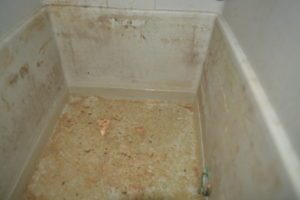
Another one of the most common problems that you are likely to come across when looking at your PulsaCoil 2000 hardware is depleted water issues. These are irritatingly common for some people, depending on how well you maintain your system. Depleted water in the thermal store is a specific problem due to the design used here. Since the small header tank is installed separately and filled with water. Over time, a leak will cause the header tank to slowly deplete. Once beyond a certain point, it ceases all operation. It sometimes doesn't just deplete from leaks, it can also occur from normal condensations. That's why the header tank is covered with a lid to reduce this. Since it’s not always connected permanently, you can find yourself messing around trying to find a solution. Sometimes, depending on your installation, this can cause limitations with the water being balanced out. When water levels fall too low the unit simply cannot spring into action and work as it’s supposed to. It can also damage the pump inside your PulsaCoil 2000. If you are in a situation whereby manual filling is needed, be sure to check the water levels in the header tank and add water as it is needed. There should be a clear waterline that you work to, so make sure that you fill up to this point.
Drips From Your PulsaCoil 2000
Another common problem can be an excessive level of water dripping onto the floor from the system. Naturally, this means there is some form of leak or limitation. This tends to come from wear and tear, as the interior copper tank becomes leaky and let’s out water through the exterior casing. Since the leak is so incredibly small, spotting it yourself can be incredibly challenging – it’s needle in a haystack stuff. If you notice the leak and it’s not enough to be causing any problems, don’t just ignore it – before long it could become a major problem. However, fixing the leak is usually more challenging (and expensive) than replacing the Pulsacoil 2000 unit, such is the precision in the hole. Getting a PulsaCoil 2000 specialist in to take a look at your problem should be your first port of call if you notice the flooding is beginning to become sizeable or is gradually dragging and getting worse.However, some leaks can be corrected and we can supply the repairs and replacements when needed for your Pulsacoil 2000. Each of these problems above pose a significant threat to the harmony and strength of your system. Make sure that you take precautions. PulsaCoil 2000 Smart Maintenance To help avoid some of the above, or at least prolong their arrival, you can use some logical maintenance plans to help you get around this problem and have a much easier time maintaining the PulsaCoil 2000 for years to come. This is easy enough to do yourself, but if you are not tech confident or savvy then it would never hurt to hire your PulsaCoil installers once again. So, how can you go about this form of intelligent maintenance for your Pulsacoil 2000?
- Pulsacoil 2000 Like every other form of the PulsaCoil, a top-up tank is included that keeps the heat store as full as water as it can at all times. Whilst evaporation and leakage means you will always see minor drops in efficiency and water volume, it’s usually not enough to be a problem.
- A permanent water food, however, should not be supplied to your PulsaCoil 2000 headering tank. Only do this if you have an overflow pipe installed. When this is the case, you will have a system which is slowly but very surely ticking away to no longer working at all or causing a major leak. We would recommend you have it inspected on a yearly interval but can do this yourself.
- The only action that you can take at this point, then, is to get a bucket out and top the water back up. However, that’s not very efficient for a system such as the PulsaCoil 2000! The only benefit is that it makes knowing whether or not the leak has to be replaced with more water.
- Instead, you can look for the black or grey tank that was provided above the system. This has a lid on it, and is very easy to access most of the time. All you need to do is lift up that lid, and inside you can top it up. Do this once per year and it should be enough to stop any lingering problems or limitations from starting inside your Pulsacoil 2000.
- Again, if you do know what you are doing or are scared to try, call out our team of PulsaCoil Plumbers today.
Spares & Parts Available for the Gledhill PulsaCoil 2000
-
Gledhill Pulsacoil 2000 Sight Glass XB443
Regular price £13.30 GBPRegular priceUnit price / per£15.68 GBPSale price £13.30 GBPSale -
Gledhill Pulsacoil 2000 Store Sensor (Grey) GT146
Regular price £34.80 GBPRegular priceUnit price / per£39.99 GBPSale price £34.80 GBPSale -
Gledhill Pulsacoil 2000 Hot Water Sensor (White) GT153
Regular price £32.40 GBPRegular priceUnit price / per£39.99 GBPSale price £32.40 GBPSale -
Gledhill Pulsacoil 2000 Thermostat Rod XB081
Regular price £27.99 GBPRegular priceUnit price / per£34.99 GBPSale price £27.99 GBPSale -
Gledhill Pulsacoil 2000 Immersion Element XB080
Regular price £84.00 GBPRegular priceUnit price / per£99.99 GBPSale price £84.00 GBPSale -
Gledhill Pulsacoil 2000 Overheat Stat GT064
Regular price £28.80 GBPRegular priceUnit price / per£34.99 GBPSale price £28.80 GBPSale -
Gledhill Pulsacoil 2000 Red LED XB361
Regular price £4.10 GBPRegular priceUnit price / per£4.78 GBPSale price £4.10 GBPSale -
Gledhill Pulsacoil 2000 Green LED XB362
Regular price £4.10 GBPRegular priceUnit price / per£4.78 GBPSale price £4.10 GBPSale


